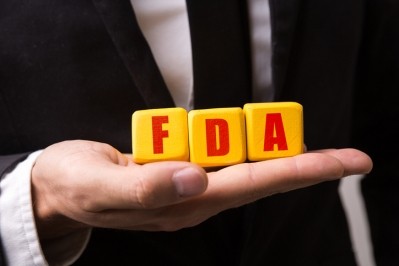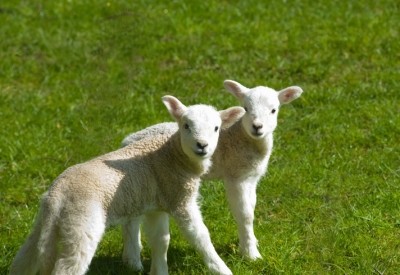Committee delays making any amendments to EU hemp feed rules on back of stakeholder request

SCOPAFF is having in depth discussions on a possible revision to the hemp entries in that directory.
The Committee has decided not to impose maximum CDB levels for hemp products used as feed materials until further scientific data is available on the potential health risks associated with CBD in line with a request made by four EU organizations, a spokesperson for COPA-COGECA, the EU farming industry representatives, told FeedNavigator.
COPA-COGECA, along with COCERAL, the European association of trade cereals, rice, feedstuffs, oilseeds, olive oil, oils and fats, agrosupply trade, the European industrial hemp association (EIHA) and FEDIAF, the European pet food industry group, had asked SCOPAFF to hold off on its decision-making.
The issue of maximum levels for CBD in animal feed is expected to be taken up by SCOPAFF after toxicology reports are available; those studies are due to be completed by the end of the year, said the farming group representative.
“Hemp feed materials have been widely used in animal nutrition for centuries. With a reinvigorated interest in the nutritional properties of hemp and an increase in cultivated surface areas in Europe, this crop is gaining ground and its share in the feed market is constantly expanding.
“According to our understanding, member states are concerned with the possible functional effects of CBD and have been discussing the possibility to define ‘hemp oil’ as an additive and to establish extremely low thresholds for CBD content for the other hemp entries or to classify them as feed additives.
“These proposals seem precipitate to us as they fail to acknowledge the crucial difference between the cannabinoid rich hemp products with very high CBD levels solely marketed for their important functional effects on the animals (i.e. hemp extracts from flowering tops, synthetic and isolated CBD) and all other products with lower CBD levels mostly intended for animal nutrition and sometimes also for their limited effects on animal well-being.
“Furthermore, the reasoning behind the thresholds proposed assumes that feed materials should be qualified as feed additives as soon as they present some functional effects. We believe that this reasoning is not aligned with the classification commonly used for feed materials and feed additives,” wrote the four organizations in a letter to the EU executive last month.
CBD threshold levels, functional effects
Hemp seed and hemp seed oil are ideal for fish, rabbits, fowl and other similar species, they said.
The seed itself contains a very small concentration of cannabinoids most of which are cleaned before entering the market, which results in residual and extremely low levels of contamination, noted the associations.
“Derived from seeds, the press hemp expeller (also marketed as hemp cake or hemp meal when it is milled) results in a fiber-rich by-product that is mainly used for cattle and pigs. These seed products are certainly intended for animal nutrition without any functional purpose and their CBD content threshold should be in line with CBD levels under which no effect can be observed. This assumption is expected to be confirmed by the results of the toxicology studies for CBD on rats and human beings that EIHA is currently conducting in the framework of a joint novel food application."
In terms of the possibility for feed materials to have a functional effect on animals, the trade groups outlined that hemp flour - from dried whole plant - hemp fiber - mechanically extracted from the stalk - and hemp silage - ensiled hemp plants - are predominantly cellulose-containing plant materials that are ideal and only used for ruminants. “These products have higher CDB content than hemp seed, hemp seed oil and hemp expeller. Nevertheless, they are never the only compound of the animal diet and their share in the total consumption is usually kept below 15% (with a consequential dilution effect of any compound present), thus reducing the CBD content of the feed. However, given their higher CBD content, these hemp products can sometimes have a functional effect on the animal.”
Similarly, the hemp oil, which results from the pressing of the fruiting tops - seeds and leaves left in the 30 to 40 cm apical part of the plant - is not always intended for functional purposes and constitutes only a small part of the animal diet, they noted. In addition, its processing is simple and does not require any further steps before marketing.
“Hemp oil should not be confused with enriched hemp extracts, which result from the pressing and further processing (decarboxylation) of the flowering tops, or isolated and synthetic CBD. The latter only have a functional purpose, contain more than 10,000 ppm of CBD and are often incorrectly used for extracts in vegetable oil solutions - diluted in a carrier, such as coconut oil, or other similar oils.”
The organizations also highlighted that many products included in the EU Catalogue of Feed Materials have functional effects on animals including lucerne solubles, and garlic along with category 11 products such as calcium carbonate.
“Indeed, the COPA-COGECA/FEFAC EU Code of Good labelling practices for compound feed for food producing animals, officially approved by the European Commission, even allows the use of claims for feed with functional effects on animals that are not due to the presence of feed additives, but only to the feed materials used. Consequently, we believe that hemp entries, as long as they respect the natural CBD content and do not undergo complex processing (which increases the concentration values of cannabinoids) should be considered as feed material and not as an additive.”








